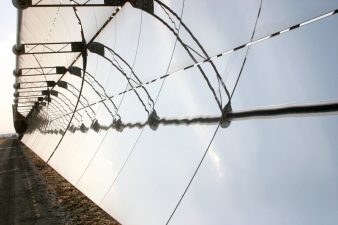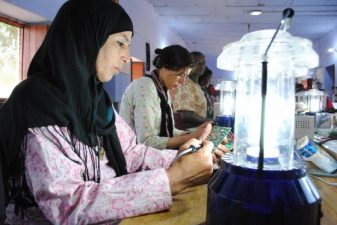 The new roads required to transport wind turbines to installation sites in Turkey can delay projects and add to their costs, but also create hundreds of new construction jobs.
The new roads required to transport wind turbines to installation sites in Turkey can delay projects and add to their costs, but also create hundreds of new construction jobs.
An anonymous representative from one of Turkey’s largest wind energy companies says that every new wind project requires new access roads, because the best wind is found in relatively remote, inaccessible terrain, according to the Hurriyet Daily News. Even main roads sometimes need to be rebuilt, because the trucks bringing the wind turbine equipment cannot maneuver sharp curves.
As a result, the extra costs of road construction are often figured into the projected costs of wind energy companies. Local authorities, the Ministry of Environment and various NGOs must also be consulted when planning any wind project, to ensure that local communities and ecosystems won’t be too disrupted by the new roads.
But so far, these roads’ biggest effect on local communities seems to be the new construction jobs they create.
Certainly, wind companies have not imitated the heavy-handed way in which hydropower plants or thermal power plants are built in Turkey, often without regard for the local environment or local residents’ concerns. Unlike thermal power companies, wind energy companies typically employ local construction outfits, and take pains to inform local residents about the project in detail, according to Mustafa Ataseven, chairman of the Turkish Wind Energy Association.
These procedures can delay a wind project by several months, Ataseven told the Daily News. But they are small hurdles compared to the major forces that have held back the wind industry in Turkey: a lack of government funding and an inefficient licensing system.
Wind power in Turkey took a big hit in the early 2000s, when the country suffered a financial crisis and requested help from the International Monetary Fund. To encourage market privatization, the IMF aid forced the Turkish government to cancel guaranteed funds to seventeen already-approved wind power projects, according to a report by Richard Lynch of the U.S. Department of Energy.
In 2007, the Turkish government passed a renewable energy law with small incentives for wind energy, which boosted the sector. An amendment to that law, passed at the end of 2010, increased feed-in tariffs for wind to $0.073 per kilowatt-hour, which, though small, should further promote investment in wind projects.
When Turkey’s Energy Market Regulatory Authority (EMRA) invited power companies to apply for wind project licenses in 2008, it received applications for almost 80 GW of projects. Unfortunately, most of these applications overlapped at a handful of grid connection points. As a result, no construction on the projects can begin until new tenders are held for each separate connection area, which will begin to happen later this year.
Currently, the country has an installed wind power capacity of 1.3 GW, which is still a fraction of its estimated potential of 90 GW. But the capacity is increasing quickly. In 2010 alone, 343 MW were added to the grid, and by 2015, Turkey’s wind power capacity is projected to reach 5 GW. The government wants to increase that figure to 20 GW by 2023.
If these exciting numbers come true, Turkey may well become a major player in the Middle Eastern wind energy industry — more so than countries like Egypt, which just announced a tender for 2.7 gigawatts of wind projects, and Jordan, where the government aims to install 1.6 GW of wind power by 2020.
Compared to its neighbors, and to the depressing incentives for other renewable energies in Turkey, wind energy has a bright future in the country. If wind projects can be responsibly planned while also creating employment opportunities for local construction workers, so much the better.
Read more about wind energy in Turkey and the region:
Turkey Blowing and Going on Wind Energy
Egypt Requests Bids to Get 2.7 Gigawatts of Wind Power by 2016
Syria’s Master Plan for Renewable Energy
Image via royalgeekg




Comments are closed.